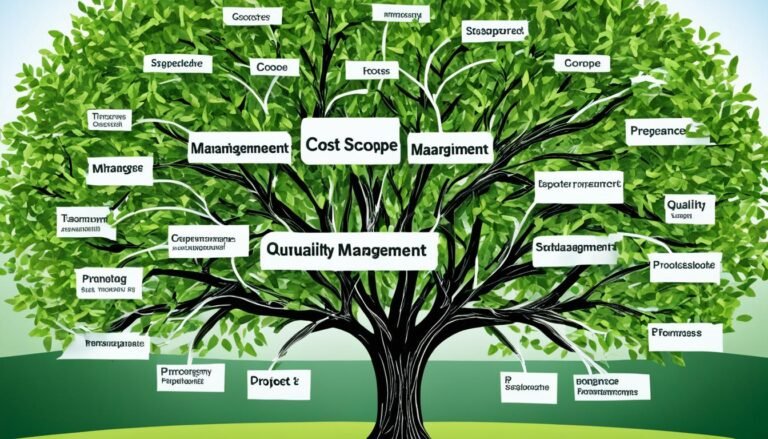Milestone Tracking: Keeping Your Project on Schedule
In today's fast-paced business environment, keeping projects on schedule is essential for success. However, with multiple tasks, team members, and potential roadblocks, it can be challenging to stay on track. That's where milestone tracking comes in.
By breaking down your project into smaller, achievable milestones, you can effectively monitor progress, identify potential bottlenecks, and make necessary adjustments along the way. But how exactly can you ensure that your project stays on schedule?
In this discussion, we will explore the importance of milestone tracking, the key elements of setting clear milestones, the tools that can assist you in tracking progress, and the strategies for dealing with delays and setbacks. Join us as we uncover the secrets to keeping your project on track and achieving success.
Key Takeaways
- Milestone tracking is important for monitoring progress, identifying potential issues, and ensuring project goals are achieved within the designated timeline.
- Setting clear project milestones helps establish strategic markers for progress, outlines specific goals and deliverables, and enables monitoring and necessary adjustments.
- When choosing milestone tracking tools, it is important to evaluate features, user interface, scalability, compatibility, cost, and value.
- Assigning responsibility for milestone completion involves clearly defining roles, communicating expectations, establishing accountability mechanisms, and holding team members accountable for their tasks.
The Importance of Milestone Tracking
Milestone tracking plays a pivotal role in project management, providing a structured and efficient approach to monitor progress, identify potential issues, and ensure project goals are achieved within the designated timeline. The benefits of milestone tracking are numerous and can greatly contribute to the success of a project.
One of the key benefits of milestone tracking is that it allows project managers to have a clear overview of the project's progress. By setting specific milestones throughout the project lifecycle, managers can easily track and measure progress against predetermined targets. This helps to ensure that the project stays on track and that any potential delays or issues are identified and addressed promptly.
Another important role of milestones in project management is that they serve as a means of communication and coordination. By setting milestones, project managers can effectively communicate project timelines and deliverables to team members, stakeholders, and clients. This ensures that everyone involved in the project is aligned and working towards the same goals, reducing confusion and increasing overall project efficiency.
Furthermore, milestones provide a sense of achievement and motivation for project teams. As milestones are reached and goals are accomplished, team members are able to see their progress and feel a sense of accomplishment. This can help to boost morale and motivation, leading to increased productivity and better outcomes.
Setting Clear Project Milestones
To effectively manage a project and ensure its success, it is crucial to establish and define clear milestones that serve as strategic markers for progress and coordination. Clear milestone objectives provide a roadmap for the project team, outlining the specific goals and deliverables that need to be achieved at each stage of the project. Effective milestone management involves setting realistic and achievable targets, monitoring progress, and making necessary adjustments to stay on track.
One way to visually represent project milestones is through a table, which can help project managers and team members easily track and understand the progress of the project. Here is an example of a simple table that can be used to document project milestones:
| Milestone | Objective |
|---|---|
| Milestone 1 | Complete initial project planning and requirements gathering |
| Milestone 2 | Develop and obtain approval for project scope and timeline |
| Milestone 3 | Execute project tasks and deliverables according to schedule |
Choosing the Right Milestone Tracking Tools
One essential aspect of effective milestone tracking is selecting the appropriate tools for the task. Choosing the right milestone tracking tools is crucial for keeping your project on schedule and ensuring its successful completion. With the wide range of options available, it is important to evaluate milestone tracking software carefully.
When evaluating milestone tracking software, there are several key factors to consider. First, consider the features offered by the software. Does it have the necessary functionalities to track and manage milestones effectively? Look for features such as customizable milestone templates, task dependencies, and progress tracking.
Second, consider the user interface and ease of use. The software should be intuitive and user-friendly, allowing team members to easily update and view milestone progress. This will ensure that everyone is on the same page and can track milestones efficiently.
Additionally, consider the scalability and compatibility of the software. Will it be able to handle the size and complexity of your project? Can it integrate with other tools and software that your team uses? These considerations are essential for seamless project management.
Lastly, consider the cost and value of the software. Evaluate the pricing plans and determine if the features offered justify the investment. Look for software that offers a good balance between affordability and functionality.
Assigning Responsibility for Milestone Completion
When it comes to effectively managing milestone tracking, a key aspect is assigning responsibility for milestone completion. This ensures that all team members understand their roles and are accountable for their tasks. Here are three important considerations when assigning responsibility for milestone completion:
- Clearly define roles and responsibilities: It is crucial to clearly define the roles and responsibilities of each team member involved in milestone completion. This includes identifying who is responsible for each specific task or deliverable related to the milestone. By providing clarity, team members can understand their individual responsibilities and work towards completing their assigned tasks.
- Communicate expectations: Effective communication is essential in assigning responsibility for milestone completion. Clearly communicate the expectations for each team member, including the timeline, quality standards, and any dependencies or constraints. This ensures that everyone is on the same page and understands what is expected of them.
- Establish accountability mechanisms: To ensure milestone accountability, it is important to establish mechanisms for tracking progress and holding team members accountable for their assigned tasks. This can include regular check-ins, progress reports, or milestone review meetings. By implementing accountability mechanisms, project managers can monitor progress and address any issues or delays promptly.
Monitoring Progress and Adjusting Milestones
To effectively monitor project progress and adjust milestones, it is crucial to employ various progress tracking techniques. These techniques enable the project manager to gather accurate data and assess whether the project is on track or facing any delays.
Additionally, milestone adjustment strategies should be implemented to address any deviations from the original plan and ensure that project timelines are adjusted accordingly, allowing for timely completion of key deliverables.
Progress Tracking Techniques
Effective progress tracking techniques are crucial for monitoring progress and adjusting milestones in a project. To ensure the project stays on track and milestones are achieved, the following techniques can be employed:
- Regular Progress Evaluation: Regularly assessing the project's progress is essential in identifying any deviations from the original plan. This evaluation allows project managers to identify potential risks and take corrective actions promptly.
- Milestone Analysis: Analyzing milestones helps in determining if they are realistic and achievable within the given timeframe. By breaking down milestones into smaller tasks, project managers can better track progress and identify any roadblocks that may hinder milestone achievement.
- Data-driven Monitoring: Utilizing project management tools and software that provide real-time data and analytics can significantly enhance progress tracking. These tools enable project managers to monitor key performance indicators, track task completion, and identify any bottlenecks or delays.
Milestone Adjustment Strategies
Milestone adjustment strategies play a critical role in monitoring progress and ensuring that project milestones are effectively adjusted as necessary. Milestones are key markers in a project that help measure progress and ensure that the project is on track. However, as project circumstances change, it may become necessary to reevaluate and adjust milestones to ensure that they remain realistic and achievable.
One strategy for milestone adjustment is milestone evaluation. This involves regularly assessing the progress towards each milestone and determining if any adjustments need to be made. This evaluation process can help identify any potential issues or delays and allows for proactive planning to address them.
Another strategy is milestone reevaluation. This involves taking a step back and reassessing the overall project timeline and milestones. It may be necessary to adjust milestones based on changes in project scope, resource availability, or external factors beyond the project team's control. By reevaluating milestones, project managers can ensure that they remain aligned with the project's objectives and timeline.
To illustrate these strategies, the following table provides an example of milestone adjustment strategies:
| Strategy | Description | Example |
|---|---|---|
| Milestone evaluation | Regularly assess progress towards milestones and determine if adjustments are necessary. | Weekly progress meetings to review milestone completion status. |
| Milestone reevaluation | Reassess overall project timeline and milestones to align with changes in project scope or resources. | Adjusting milestones after a change in project requirements. |
Monitoring Project Timelines
One crucial aspect of project management is closely monitoring project timelines and making necessary adjustments to milestones as progress is monitored. Tracking progress and ensuring project deadlines are met are key responsibilities of a project manager.
Here are three strategies for monitoring project timelines effectively:
- Regular Progress Updates: Schedule regular check-ins with team members to track their progress on assigned tasks. This allows you to stay informed about any potential delays and take immediate action to address them.
- Milestone Review Meetings: Conduct milestone review meetings to evaluate the progress made towards each milestone. This helps identify any bottlenecks or roadblocks that may require adjustments to the project timeline.
- Utilize Project Management Tools: Take advantage of project management software or tools to track project timelines and deadlines. These tools provide real-time visibility into project progress and help you identify any deviations from the planned schedule.
Effective Communication and Collaboration
The seamless flow of information and collaboration among team members plays a vital role in achieving project milestones and ensuring successful outcomes. Effective communication is essential for project success as it enables team members to understand their roles and responsibilities, exchange information, and address any issues or challenges that may arise.
In order to establish effective communication within a project team, it is important to implement collaborative strategies that promote open and transparent communication channels.
One effective collaborative strategy is to establish regular team meetings where team members can discuss project progress, share updates, and address any concerns. These meetings provide an opportunity for team members to align their efforts, clarify expectations, and address any potential roadblocks.
Additionally, using collaborative tools and technology, such as project management software or virtual communication platforms, can facilitate real-time communication and enable team members to collaborate regardless of their geographical location.
Another important aspect of effective communication and collaboration is the establishment of clear and concise communication channels. This involves defining the preferred mode of communication, such as email, phone calls, or instant messaging, and ensuring that team members are aware of how and when to communicate. By setting clear expectations and guidelines, misunderstandings and delays can be minimized, and project milestones can be achieved more efficiently.
Dealing With Milestone Delays and Setbacks
To ensure a project stays on track and achieves its milestones, it is crucial for project teams to effectively navigate and overcome any delays or setbacks that may arise along the way. Here are three strategies for dealing with milestone delays and setbacks:
- Rescheduling milestones: When a milestone is delayed, it is important to reassess the project schedule and adjust the timeline accordingly. This may involve shifting other milestones or extending the project duration. By rescheduling milestones, the project team can maintain a realistic and achievable timeline.
- Managing stakeholder expectations: Communication is key when it comes to managing stakeholder expectations during milestone delays. It is important to keep stakeholders informed about the reasons for the delay, the revised timeline, and any potential impacts on the overall project. By maintaining open and transparent communication, project teams can help manage stakeholder expectations and minimize any negative impact on project relationships.
- Identifying and addressing root causes: When faced with milestone delays, it is crucial to identify the root causes of the delay and take appropriate action. This may involve analyzing the project plan, evaluating resource allocation, or addressing any issues or challenges that may be hindering progress. By addressing the root causes of delays, project teams can prevent similar setbacks in the future and ensure smoother project execution.
Celebrating Milestone Achievements
Celebrating the achievement of project milestones is an important practice that recognizes the hard work, dedication, and successful progress made by the project team. Proper celebration planning ensures that milestone achievements are acknowledged and appreciated, boosting team morale and motivation.
To plan a successful celebration, it is essential to consider the specific milestone, the team's preferences, and the project's budget. Recognizing that different milestones may warrant different levels of celebration, it is crucial to align the celebration with the significance of the achievement. For smaller milestones, a simple team gathering with refreshments or a personalized thank you note may suffice. However, for major milestones, a more elaborate celebration with rewards and recognition may be appropriate.
Recognition rewards are an effective way to celebrate milestone achievements and show appreciation for the team's hard work. These rewards can include certificates, plaques, or even monetary bonuses. It is important to ensure that the rewards are meaningful and personalized to the individual team members. Recognizing and rewarding the team's efforts not only celebrates the milestone but also reinforces a culture of excellence and motivates the team to continue performing at a high level.
Continuous Improvement and Lessons Learned
Through continuous improvement and the process of lessons learned, project teams can enhance their performance and achieve greater success in future endeavors. By implementing effective continuous improvement strategies and conducting thorough lessons learned analysis, project teams can identify areas for improvement, make necessary adjustments, and avoid repeating past mistakes.
Here are three key ways project teams can leverage continuous improvement and lessons learned:
- Regularly review and evaluate project performance: Project teams should establish a system for regular project reviews to identify areas where improvements can be made. This can include analyzing project metrics, reviewing feedback from stakeholders, and conducting post-project surveys. By consistently evaluating project performance, teams can identify strengths and weaknesses and implement changes to optimize future projects.
- Foster a culture of learning and knowledge sharing: Encourage team members to openly share their experiences and lessons learned throughout the project. This can be done through post-project debriefings, knowledge-sharing sessions, and documentation of best practices. By promoting a culture of learning, project teams can capitalize on collective knowledge and continuously improve their project execution.
- Implement feedback loops and adaptability: Project teams should establish mechanisms for gathering feedback from stakeholders and project team members throughout the project lifecycle. This feedback can help in identifying potential issues or areas of improvement early on, allowing for timely adjustments. By being adaptable and responsive to feedback, project teams can proactively address challenges and improve project outcomes.
Conclusion
In conclusion, milestone tracking is crucial for keeping projects on schedule. By setting clear milestones, using the right tracking tools, assigning responsibility, monitoring progress, and promoting effective communication and collaboration, project teams can ensure timely completion.
However, setbacks and delays may occur, and it is important to handle them appropriately while celebrating milestone achievements. Continuous improvement and learning from past experiences are essential for future success.
As the saying goes, 'Success is not final, failure is not fatal: It is the courage to continue that counts.'







